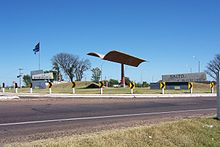
A dome is an architectural element similar to the hollow upper half of a sphere. There is significant overlap with the term cupola, which may also refer to a dome or a structure on top of a dome. The precise definition of a dome has been a matter of controversy and there are a wide variety of forms and specialized terms to describe them.
The year 1960 in architecture involved some significant architectural events and new buildings.

Pier Luigi Nervi was an Italian engineer and architect. He studied at the University of Bologna graduating in 1913. Nervi taught as a professor of engineering at Rome University from 1946 to 1961 and is known worldwide as a structural engineer and architect and for his innovative use of reinforced concrete, especially with numerous notable thin shell structures worldwide.

The Guastavino tile arch system is a version of Catalan vault introduced to the United States in 1885 by Spanish architect and builder Rafael Guastavino (1842–1908). It was patented in the United States by Guastavino in 1892.
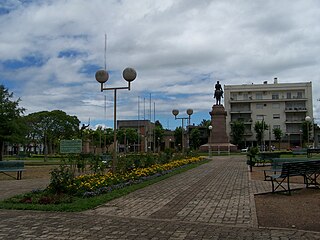
Salto is the capital city of the Salto Department in northwestern Uruguay. As of the 2011 census it had a population of 104,028 and is the second most populated city in Uruguay, after Montevideo.
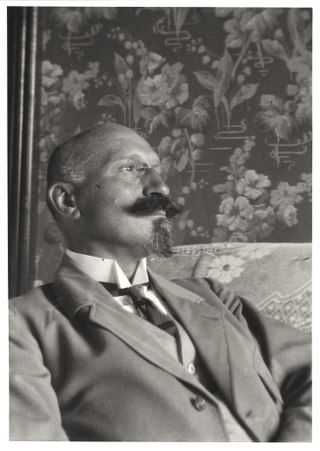
Robert Maillart was a Swiss civil engineer who revolutionized the use of structural reinforced concrete with such designs as the three-hinged arch and the deck-stiffened arch for bridges, and the beamless floor slab and mushroom ceiling for industrial buildings. His Salginatobel (1929–1930) and Schwandbach (1933) bridges changed the aesthetics and engineering of bridge construction dramatically and influenced decades of architects and engineers after him. In 1991 the Salginatobel Bridge was declared an International Historic Civil Engineering Landmark by the American Society of Civil Engineers.
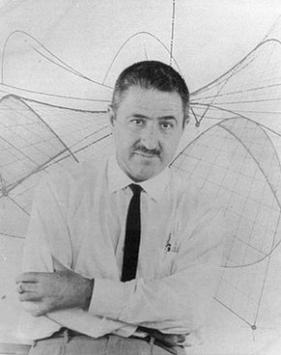
Félix Candela Outeriño was a Spanish and Mexican architect who was born in Madrid and at the age of 26, emigrated to Mexico, acquiring double nationality.

The Gaussian vault is a reinforced masonry construction technique invented by Uruguayan engineer Eladio Dieste to efficiently and economically build thin-shell barrel vaults and wide curved roof spans that are resistant to buckling.

French architecture consists of architectural styles that either originated in France or elsewhere and were developed within the territories of France.

Joan Martorell i Montells was a Catalan architect and designer. He was an uncle of the architect Bernardí Martorell i Puig.
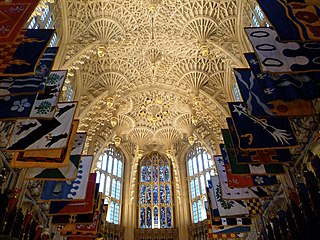
Pendant vaulting is considered to be a type of English fan vaulting. The pendant vault is a rare form of vault, attributed to fifteenth century English Gothic architecture, in which large decorative pendants hang from the vault at a distance from the walls. In some cases, the pendants are a large form of boss. In his book on fan vaults, Walter Leedy defines the fan vault stating: “Fan vaults have the following specific interrelated visual and structural characteristics: (1) vaulting conoids of regular geometric form, (2) vertical ribs, each of consistent curvature and placement, (3) a distinct central spandrel panel, (4) ribs perpendicular to the vaulting surface, and (5) applied surface patterning.”
Román Fresnedo Siri was a Uruguayan architect. He is best known for designing major civic buildings throughout South America and the United States, including the Pan American Health Organization (PAHO) headquarters in Washington, D.C., and the Palacio de la Luz in Montevideo.

Estación Atlántida is a northern suburb of the city Atlántida in the Canelones Department of southern Uruguay.

Certain works of structural engineering design are also works of structural art. Such works can be classified as structural art when they attain excellence in the three areas of efficiency, economy, and elegance, as defined by Prof. David P. Billington of Princeton University. A key part of the concept of structural art is that the structural engineer making the design must exercise his or her creativity and playfulness to create an elegant structure within the constraints imposed by engineering requirements. These constraints include the safety and serviceability of the structure. Therefore, a structure cannot be a successful work of structural art without also being a successful work of structural engineering design, yet many works of structural engineering design that are safe and serviceable do not rise to the level of structural art because they fail to be economical, efficient, or elegant. Structural art is a topic of active scholarly research at several universities in the United States, including Princeton University, Tufts University, Bucknell University, University of Massachusetts Amherst, the Massachusetts Institute of Technology, and Roger Williams University, and in other parts of the world such as Spain and Germany. While structural artists often collaborate with architects, the discipline of structural art is based upon engineering rather than architectural design. A recent summary about this topic can be found in a review paper.

Rafael Dieste was a Galician poet, philosopher, short-story writer, and dramatist writing mostly in Galician language, but also in Spanish language. He began to write with the encouragement of another Galician poet, Manuel Antonio, wrote for the theatre and wrote widely on aesthics. His stories have been compared to the other-world approach of the graphic art of M. C. Escher.
The Church of Our Lady of Lebanon is a Maronite parish church in the neighbourhood of Sayago, Montevideo, Uruguay.

The Church of Christ the Worker and Our Lady of Lourdes, also known simply as Iglesia de Estación Atlántida, is a Roman Catholic parish church and a World Heritage Site in Estación Atlántida, Uruguay.

The Church of Saint John of Ávila is a Roman Catholic parish church located in a modern neighbourhood of Alcalá de Henares, Spain.
The Church of Saint Charles Borromeo and Our Lady of the Assumption is a Roman Catholic parish church in the neighbourhood of Prado, Montevideo, Uruguay.
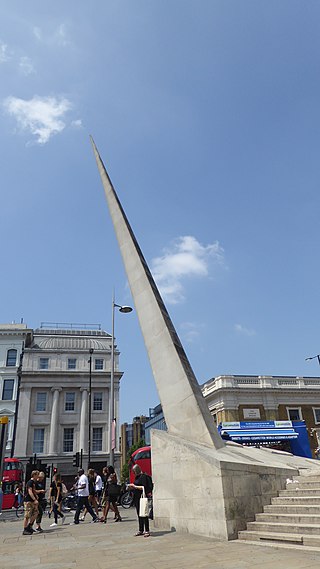
Tensioned stone is a high-performance composite construction material: stone held in compression with tension elements. The tension elements can be connected to the outside of the stone, but more typically tendons are threaded internally through a drilled duct.


